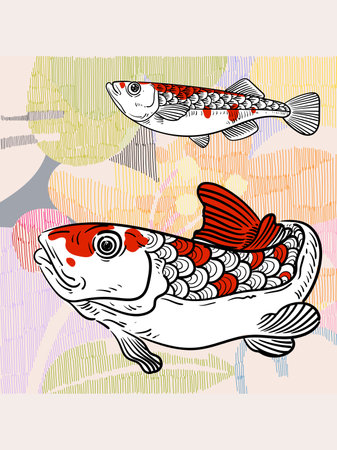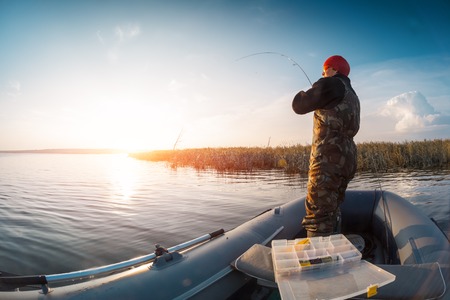Introduction to the River Dove
The River Dove, winding gracefully through the picturesque landscapes of Derbyshire and Staffordshire, stands as a cornerstone in the UK’s coarse fishing scene. Renowned for its crystal-clear waters and diverse aquatic habitats, this iconic river has long been a magnet for anglers seeking both challenge and reward. As one of England’s premier venues for barbel and chub, the Dove consistently features in local angling conversations, not only for its natural beauty but also for the quality and size of its resident fish. The river’s unique blend of fast-flowing glides, gravel runs, and deeper pools creates an environment where specimen barbel and chub thrive, offering anglers of all abilities the opportunity to test their skills against two of Britain’s most sought-after coarse species.
Significance in the UK Coarse Fishing Scene
In terms of national reputation, the River Dove holds its own alongside more famous rivers like the Trent or Severn. Its relatively unspoilt banks and well-managed stretches attract dedicated coarse anglers from across the Midlands and beyond. The Doves healthy populations of barbel (Barbus barbus) and chub (Squalius cephalus) are testament to ongoing conservation efforts and sensitive club management, which help maintain excellent sport throughout the season.
Why Local Anglers Favour the Dove
| Feature | Why It Matters |
|---|---|
| Diverse Habitats | Offers a variety of swims suitable for different techniques targeting barbel and chub. |
| Consistent Water Quality | Supports a robust food chain, resulting in healthy fish growth and numbers. |
| Scenic Surroundings | Provides a tranquil angling experience away from urban noise. |
| Accessible Stretches | Many sections are managed by local angling clubs with day tickets available. |
A Heritage Steeped in Tradition
The River Dove’s legacy is deeply entwined with British angling history—most famously immortalised by Izaak Walton in “The Compleat Angler”. Today, it continues to be a proving ground for modern coarse anglers, especially those who cherish traditional methods and a connection to nature. For those targeting hard-fighting barbel or wily chub, few rivers can match the combination of sport and scenery offered by the Dove.
2. Prime Stretches for Barbel and Chub
When it comes to targeting barbel and chub on the River Dove, understanding the river’s prime stretches is crucial for any angler aiming to maximise their chances. The Dove meanders through idyllic Derbyshire countryside, offering a variety of habitats and access points—each with its own unique characteristics. Below is a detailed breakdown of the most productive stretches, complete with access information, physical features, and what makes each location stand out for coarse fishing enthusiasts.
Key Stretches Overview
| Stretch | Access | Main Features | Notable For |
|---|---|---|---|
| Dovecliffe (Burton) | Day ticket via Burton Mutual Angling Association; ample parking near bridge | Deep glides, gravel runs, overhanging willows | Consistent barbel catches, specimen chub to 6lb+ |
| Mickleover & Egginton | Syndicate-controlled; limited public pegs; riverside footpaths | Shallow riffles, long bends, mature trees along banks | Classic summer chubbing, hard-fighting barbel in low water |
| Tutbury & Rolleston | Accessible via Rolleston AC; day tickets available locally | Boulder-strewn runs, deep holes beneath bridges | Larger shoals of chub, big barbel lurking near snags |
| Mappleton to Ellastone | Private stretches and limited club waters; check local clubs for access | Natural undercuts, fast-flowing runs, gravels interspersed with silt beds | Trophy-sized barbel late summer; winter chub sport in mild flows |
| Dovedale (Upper Dove) | National Trust or day ticket; popular walking routes nearby | Limestone gorges, crystal clear pools, wild riverbanks | Stunning surroundings; challenging but rewarding fishing for wary chub and occasional barbel |
Characteristics of Productive Stretches
The River Dove’s best barbel and chub waters share several key characteristics. Look for sections with a mix of pace—steady glides broken up by shallow riffles or deeper holes. Overhanging cover such as willows or alders provides sanctuary for both species and is often where the bigger specimens are found. Natural features like gravel bars and undercut banks are particularly attractive in summer when fish patrol these margins in search of food.
Access & Local Knowledge Tips
While many of the Dove’s prime stretches are controlled by angling clubs or syndicates, there are excellent day ticket options for visiting anglers. Always check local regulations before setting out—some areas operate close-season rules or have bait restrictions to protect stocks. Chatting with local anglers at car parks or nearby tackle shops can yield invaluable insights into recent catches and effective methods.
What Sets the Dove Apart?
The River Dove stands out thanks to its blend of scenic beauty and consistent coarse fishing action. Its varied character—from tumbling upper reaches to slower meandering sections downstream—means there’s always a stretch perfectly suited for your chosen tactics, whether legering for powerful barbel or trotting bread flake for cagey chub.

3. Recommended Tackle and Techniques
When fishing for barbel and chub on the River Dove, selecting the right tackle is crucial for success, especially given the river’s varied flow, gravel runs, and occasional snaggy swims. Understanding local conditions will help you make informed choices for rods, reels, end tackle, and bait presentation.
Rods and Reels: Finding the Perfect Balance
The Dove’s moderate size requires gear that can handle powerful fish without sacrificing sensitivity. For barbel, a 1.75lb to 2.25lb test curve rod is ideal, offering enough backbone to control hard-fighting specimens but still providing a forgiving action when using lighter lines for chub. For chub-specific sessions or finesse work in low flows, a 1.25lb test curve rod offers superior bite detection.
Reel choice should prioritise reliability and smooth drag systems. A robust fixed spool reel in the 4000–5000 size range is perfect for both species, with a preference for models capable of holding at least 150 yards of 8–12lb mono or braided mainline.
Recommended Rods & Reels Table
| Target Species | Rod Test Curve | Recommended Reel Size |
|---|---|---|
| Barbel | 1.75–2.25lb | 4000–5000 (fixed spool) |
| Chub | 1.25–1.5lb | 3000–4000 (fixed spool) |
Mainline, End Tackle & Terminal Gear
The River Dove’s bottom is generally clean gravel interspersed with weedbeds and occasional snags. For mainline, 10–12lb abrasion-resistant mono suits most barbel swims, while a lighter 6–8lb line can be used for chub in clearer water.
Terminal tackle should remain simple yet strong. Employ running lead rigs with 2oz weights to keep baits anchored in faster flows, paired with robust swivels and hooklengths between 10–15lb breaking strain for barbel or down to 6lb for wary chub.
Chemically-sharpened size 8–12 hooks are recommended; opt for patterns such as wide gape or specialist river hooks that offer excellent penetration and hold even during spirited battles.
Tackle Selection Guide Table
| Component | Barbel Setup | Chub Setup |
|---|---|---|
| Mainline | 10–12lb mono/ braid | 6–8lb mono/ fluoro |
| Hooklength | 10–15lb fluorocarbon | 6–8lb fluorocarbon |
| Hooks | Size 8–10 wide gape/barbel specialist | Size 10–12 wide gape/specialist river |
Baiting Strategies and Presentation Tactics
Legering is by far the most effective approach on the Dove, particularly in deeper glides and over gravel bars where barbel feed confidently. Use open-end feeders packed with groundbait and pellets to create scent trails downstream. For chub, bread flake or crust presented beneath an avon float excels in slower eddies and under overhanging trees.
PVA bags loaded with hemp and mini pellets can also tempt larger barbel when bites are finicky. Always tailor your rig length to swim conditions—shorter hooklengths (6–10 inches) suit fast flows, while longer rigs (18 inches plus) excel in steadier sections where fish have more time to inspect the bait.
4. Best Times and Conditions to Fish
Understanding the optimal times and environmental factors for targeting barbel and chub on the River Dove is crucial for maximising your chances of a productive session. The river’s character varies through the seasons, and knowing when to fish can make all the difference, especially on this classic Midlands waterway.
Seasonal Patterns on the River Dove
The River Dove offers excellent coarse fishing throughout the traditional season, but barbel and chub respond distinctly to changing conditions:
| Season | Barbel Activity | Chub Activity | Recommended Approach |
|---|---|---|---|
| Spring (March–May) | Increasing activity as temperatures rise; often found in deeper runs | Active in shallows and under cover; start to feed freely post-spawning | Use maggots or bread for chub; try meat or pellets for early-season barbel |
| Summer (June–August) | Peak activity in warm evenings; favouring fast oxygenated water | Plentiful, often visible under overhanging trees during midday heat | Float fishing with casters or surface baits for chub; rolling meat or boilies for barbel |
| Autumn (September–November) | Feeding heavily ahead of winter; active throughout daylight hours, especially after rainfall | Bulk up as temperatures drop, responding well to bigger baits | Larger baits like cheese paste for chub; spicy pellets and glugged boilies for barbel |
| Winter (December–February) | Lethargic except during mild spells; best after a frost-free period | Responsive on milder days, especially around midday warmth | Scented baits and subtle presentations; target slack water near cover |
Water Levels and Their Impact
The River Dove’s flow rate and clarity are significant indicators for success:
- Low Summer Levels: Fish become wary—scale down tackle and use lighter lines. Seek out deeper pools or shaded stretches where fish congregate.
- After Rainfall: Rising water with a slight tinge of colour brings barbel onto the feed. Chub also become less cautious, venturing out from snags.
- High Winter Water: Stick to slacks and eddies close to the bank where both species seek refuge from strong flows.
Weather Considerations Unique to the Dove
The Derbyshire climate can be unpredictable, but some general rules apply:
- Mild, Overcast Days: Both species are more likely to roam mid-river rather than hugging snags.
- Damp or Drizzly Conditions: Particularly good for chub, which feel safer feeding in coloured water.
- Crisp Winter Afternoons: Barbel may switch on briefly if there has been a warming trend.
- Breezy Days: Surface ripple helps mask angler presence—ideal for stalking wary summer chub.
Tactical Summary for the River Dove Angler
If you’re new to the Dove or targeting it at different times of year, matching your approach to current conditions is key. Always keep an eye on recent rainfall, river gauges, and weather forecasts before heading out. By aligning your tactics with seasonal patterns and adjusting to prevailing conditions, you’ll significantly improve your prospects of connecting with both barbel and chub on this delightful English river.
5. Access, Permits, and Local Etiquette
When planning a session targeting barbel and chub on the River Dove, understanding access rights, permit requirements, and the expected angling etiquette is crucial for both compliance and ensuring a positive experience among fellow anglers.
Day Tickets and Club Waters
The River Dove boasts a mix of club-controlled stretches and waters accessible via day ticket. Many of the most productive swims for barbel and chub are managed by local angling clubs, each with specific rules regarding membership and guest access. Below is a summary of some popular access options:
| Stretch/Location | Access Type | Permit Required | Notes |
|---|---|---|---|
| Dove Cliff (near Tutbury) | Club Water | Burton Mutual AA Membership | No day tickets; strict rules on bait and tackle |
| Egginton Stretch | Day Ticket | Purchase on bank or online | Popular for visiting anglers; check close season dates |
| Marston-on-Dove | Club Water | Pride of Derby AA Membership or Guest Permit | Limited guest permits; night fishing allowed with permission |
Navigating Rights of Way
The River Dove’s banks are interspersed with public footpaths, bridleways, and private land. Always ensure you’re accessing the river from a designated right of way or through approved club entry points. If in doubt, consult an up-to-date Ordnance Survey map or check with the controlling angling club to avoid trespassing on farmland or private property.
Public Footpath Guidance
- Stick strictly to marked paths when crossing fields or approaching swims.
- Leave gates as you find them; don’t block farm access with parked vehicles.
- Avoid disturbing livestock, especially during lambing season.
Permits: What You Need Before You Fish
An Environment Agency rod licence is mandatory for all coarse fishing on the River Dove, regardless of age or experience. This must be supplemented by the relevant day ticket or club membership for your chosen stretch. Many clubs now offer digital permits—ensure your documentation is available for inspection by bailiffs at all times.
Local Etiquette for Visiting Anglers
Camaraderie and respect underpin the UK coarse fishing scene, especially on rivers like the Dove where tradition runs deep. Adhering to established etiquette will not only help maintain good relations but also enrich your experience:
- Avoid crowding other anglers; always ask before setting up nearby if swims are limited.
- If someone is playing a fish, reel in lines that might interfere.
- Tidy up all litter, including discarded line and bait packaging—leave no trace.
- Keep noise levels down—barbel and chub can be wary in pressured areas.
Bait Restrictions & Conservation Measures
- Check individual club rules regarding maximum quantities of groundbait and type of baits permitted (e.g., restrictions on pellets or boilies in certain stretches).
- Barbless hooks are often recommended or required for catch-and-release fishing to protect stocks.
A Final Word on Respectful Angling
The River Dove’s charm lies in its unspoiled scenery and thriving wild fish stocks. By following local protocols on access, permits, and etiquette, you’ll play a part in preserving this classic English waterway for future generations of barbel and chub enthusiasts.
6. Local Insights and Conservation
When it comes to targeting barbel and chub on the River Dove, few resources are as invaluable as the wisdom of seasoned local anglers. Many regulars along the riverbanks stress the importance of understanding subtle changes in flow, water level, and bank structure—nuances that are best observed over years of dedicated fishing. For instance, veteran angler John Pearce recommends focusing on gravel runs with marginal cover during summer for chub, while deeper bends prove fruitful for barbel after rainfall. Local clubs such as Burton Mutual Angling Association often share up-to-date catch reports and tips at their meetings and online forums, fostering a tight-knit community of responsible anglers.
Perspectives from Local Anglers
| Angler | Key Advice | Favourite Stretch |
|---|---|---|
| John Pearce | Look for oxygenated water after weir pools during hot spells | Marston-on-Dove |
| Susan Bradbury | Use stealth tactics and lighter tackle for wary chub in clear water | Doveridge Meadows |
| Dave Allen | Pre-bait swims with hemp and caster mix for consistent barbel action | Tutbury Bridge Downstream |
Conservation Efforts on the River Dove
The River Dove’s reputation as a premier coarse fishery is the result of ongoing conservation efforts spearheaded by local angling clubs, the Environment Agency, and wildlife trusts. Key initiatives include:
- Riparian Habitat Restoration: Planting native trees and managing bankside vegetation to reduce erosion and provide shade.
- Water Quality Monitoring: Regular testing for agricultural runoff and pollutants, ensuring the health of coarse fish stocks.
- No-Kill Policies: Many stretches now enforce catch-and-release rules for specimen barbel and chub to maintain healthy population levels.
- Fish Stocking Programmes: Supplementary stocking of juvenile barbel and chub where natural recruitment is low.
- Litter Picks and Education Days: Organised by local groups to keep the riverside pristine and educate newcomers about responsible angling practices.
The Importance of Responsible Angling
Local anglers are keenly aware that their actions directly impact the river’s future. Adhering to closed seasons, minimising disturbance to spawning grounds, and using barbless hooks are all strongly encouraged. These collective efforts not only sustain excellent fishing for barbel and chub but also ensure the River Dove remains a haven for wildlife and a cherished part of Derbyshire’s natural heritage.


